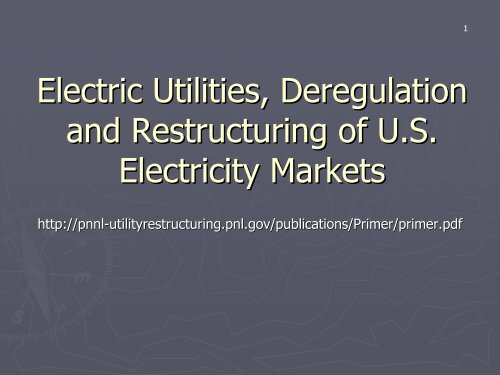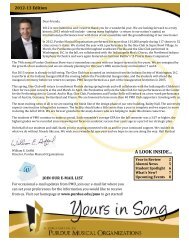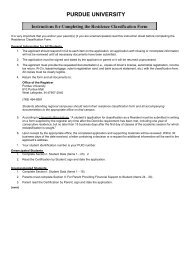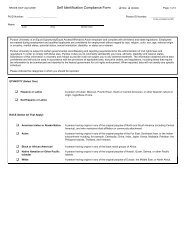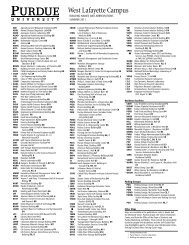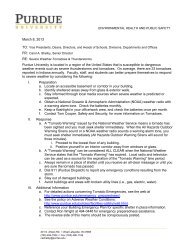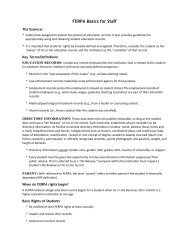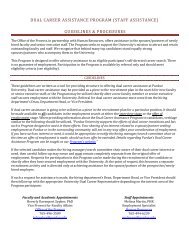Electric Utilities, Deregulation and Restructuring of U.S. Electricity ...
Electric Utilities, Deregulation and Restructuring of U.S. Electricity ...
Electric Utilities, Deregulation and Restructuring of U.S. Electricity ...
Create successful ePaper yourself
Turn your PDF publications into a flip-book with our unique Google optimized e-Paper software.
1<br />
<strong>Electric</strong> <strong>Utilities</strong>, <strong>Deregulation</strong><br />
<strong>and</strong> <strong>Restructuring</strong> <strong>of</strong> U.S.<br />
<strong>Electric</strong>ity Markets<br />
http://pnnl-utilityrestructuring.pnl.gov/publications/Primer/primer.pdf
2<br />
In The Early Days<br />
Initially utilities were not regulated.<br />
Early utilities would <strong>of</strong>ten compete for the<br />
same customers including building duplicate<br />
distribution systems. Naturally, competition<br />
was greatest in urban areas. It was cheaper<br />
to compete in densely populated areas &<br />
wealthy customers more likely to use power.
3<br />
An Historical Perspective<br />
Historically, the cost <strong>of</strong> generating power declined as<br />
utilities built ever-larger power plants, which<br />
increased efficiency <strong>and</strong> reduced production costs.<br />
Increased electric dem<strong>and</strong> required more & larger<br />
plants, which reduced costs further as well as<br />
increasing the utility rate base. This era was a win-<br />
win for everyone. Consumers had abundant, low-<br />
cost power; regulators oversaw declining rates,<br />
increased electrification, & economic growth; &<br />
utilities & stockholders gained financially.
Utility Functions<br />
4<br />
The common vision <strong>of</strong> a utility embodies three<br />
functions:<br />
(1) Generation (electricity), or production (gas)<br />
(2) transmission<br />
& (3) distribution<br />
Facts are that only a small fraction <strong>of</strong> the 3,200 or so<br />
electric utilities, in the U.S., perform all three functions<br />
& virtually no utility exists in isolation. Major investor<br />
owned utilities (IOUs) do own generation,<br />
transmission, & distribution.<br />
Very few <strong>of</strong> the publicly owned utilities (POUs) own<br />
their own generation or transmission.
5<br />
USA Structure Outline:<br />
►<br />
►<br />
►<br />
►<br />
Federal<br />
State<br />
Utility<br />
Power Pool
Status <strong>of</strong> electric utility deregulation in each state in the U.S. 6<br />
White - Continuing to monitor restructuring investor-owned owned utilities, IOUs, not pursuing further action now.<br />
Yellow - Completed studies <strong>of</strong> IOUs (power providers), not pursuing further action at this time.<br />
Green:<br />
Light – enacted legislation to implement investor-owned owned utility restructuring ~ transition not begun or suspended.<br />
Medium – Transition to restructuring begun, implementing competitive electric utility market IOUs (includes DC)<br />
Dark Green – Functioning competitive electric utility markets for investor-owned owned providers, allowing all customers<br />
choice without str<strong>and</strong>ed cost or other surcharges.<br />
rges.
7<br />
PUHCA -- 1935<br />
Since state regulation was not sufficient to<br />
control the action <strong>of</strong> interstate holding<br />
companies headquartered out-<strong>of</strong><br />
<strong>of</strong>-state,<br />
Congress passed the Public Utility Holding<br />
Company Act <strong>of</strong> 1935 (PUHCA).
8<br />
The New York Blackout <strong>of</strong> 1965 <strong>and</strong><br />
the Creation <strong>of</strong> NERC<br />
The New York blackout <strong>of</strong> 1965 was a wake-<br />
up call to the power industry. The industry<br />
responded to the blackout by creating a<br />
voluntary, utility-managed reliability<br />
organization, the North American <strong>Electric</strong><br />
Reliability Council (NERC).
9<br />
NERC<br />
NERC divided the nation into ten reliability regions.<br />
The largest council is the Western Systems<br />
Coordinating Council (WSCC). The smallest is the<br />
Mid- Atlantic Coordinating Council (MAAC). Each<br />
reliability council promulgates system planning &<br />
operating criteria that are intended to ensure that<br />
each utility with generation or transmission assets<br />
builds & operates them in a way that allows system<br />
controllers to preserve bulk power reliability.
10<br />
NERC<br />
The 10 reliability regions <strong>of</strong> the North American <strong>Electric</strong> Reliability Council
11<br />
1970’s Oil Embargo<br />
The Oil Embargo <strong>of</strong> the 1970s changed things in a<br />
hurry. Rapid increases in the cost <strong>of</strong> fuel to operate<br />
power plants translated into equally large jumps in<br />
retail power prices. Continued increases in oil prices<br />
& unstable fuel supplies led electric utilities to<br />
construct new power plants that relied on domestic<br />
coal <strong>and</strong> uranium. These plants cost much more to<br />
build than simple oil or natural gas-fired generators.<br />
Consequently, the fixed costs <strong>of</strong> utility operations<br />
increased, further increasing retail electricity prices.<br />
The natural consequence was consumer complaints<br />
& increased regulatory oversight.
12<br />
PURPA -1978<br />
Federal Public Utility Regulatory Policies Act <strong>of</strong> 1978,<br />
Section 210, (PURPA). This legislation created a new<br />
legal category <strong>of</strong> power plants known as qualifying<br />
facilities, QFs, , & new market entrants called<br />
independent power producers, IPPs. . Contracts for<br />
power from QFs typically covered the life <strong>of</strong> the<br />
plant, because the only outlet for power from a QF<br />
was the local utility. Subsequently, utilities asked<br />
Congress <strong>and</strong> state PUCs to reform the power<br />
purchase requirements <strong>of</strong> PURPA. Although<br />
Congressional action is still pending, PURPA did<br />
create a new category <strong>of</strong> power producers.
13<br />
Transmission <strong>and</strong> Distribution<br />
The transmission grid moves wholesale power from<br />
generators to distributors. The distribution system moves<br />
retail power from distributors to customers. Transmission will<br />
continue to be regulated at the federal level by FERC.<br />
Distribution will continue to be regulated at the state level by<br />
state commissions.
14<br />
IRP<br />
By the early 1980s, the situation appeared to be out<br />
<strong>of</strong> control, with most utilities requesting routine,<br />
<strong>of</strong>ten significant, rate increases <strong>and</strong> several utilities<br />
on the verge <strong>of</strong> bankruptcy. As a result, regulators<br />
began to take a much more active role in utility<br />
planning. One response was for regulators to require<br />
utilities to evaluate conservation <strong>and</strong> other<br />
alternatives rather than automatically building new<br />
plants. This process, called integrated resource<br />
planning (IRP), was successful in keeping retail rates<br />
in check, although rates were still thought to be too<br />
high.
15<br />
Why Regulation?<br />
Regulation <strong>of</strong> utilities is based on the inherent<br />
risk that a single monopoly supplier will<br />
overcharge consumers due to the lack <strong>of</strong><br />
competition <strong>and</strong> high dem<strong>and</strong>.<br />
In the United States, state PUCs regulate<br />
retail electricity prices while FERC regulates<br />
wholesale prices.
16<br />
Cost Based Regulation<br />
The historic st<strong>and</strong>ard for wholesale power exchanges<br />
has been that the price <strong>of</strong> electricity be cost-based,<br />
not market-based & that savings associated with the<br />
exchange be shared. In other words, the extra<br />
income the seller reaps <strong>and</strong> the reduced costs the<br />
buyer receives are shared between the two utilities &<br />
passed on to consumers in lower rates. The cost-<br />
based regulatory approach was adopted by FERC to<br />
stimulate so-called economy exchanges & to protect<br />
buyers (small utilities) from the inherent advantage<br />
the sellers (large neighboring utilities) had in the<br />
transaction.
17<br />
<strong>Electric</strong> Industry <strong>Restructuring</strong> in the<br />
1990’s<br />
By the early 1990s it was becoming apparent<br />
that electric industry regulatory approaches<br />
were not working. IRP was successful in<br />
holding rate increases in check & stimulating<br />
consumer choice, but the process was highly<br />
adversarial, time consuming, & expensive.<br />
Rates were still high & significant differences<br />
among adjacent electric utilities & between<br />
gas & electric utilities caused problems.
18<br />
Introduction to <strong>Restructuring</strong><br />
Until recently the local utility set a price, called a rate<br />
or tariff. Next, it metered the energy used & sent the<br />
customer a bill based on the rate. Finally, the<br />
customer pays the bill.<br />
Facility managers can participate in the regulatory<br />
process through which rates are set, but individual<br />
consumers have little influence over final prices. Now,<br />
however, this structure is undergoing a pr<strong>of</strong>ound<br />
change. State legislators & utility regulators are now<br />
letting consumers choose among a variety <strong>of</strong> new<br />
energy suppliers on the basis <strong>of</strong> competitive prices &<br />
products.<br />
This trend is called deregulation, or restructuring.
19<br />
A Utility Defined<br />
What is a utility? Typically, a utility provides a<br />
commodity or service that is considered vital to the<br />
general public such as power, water, or natural gas.<br />
Utility service is a vital need.<br />
It is deemed by state & federal lawmakers to be in<br />
the public interest to regulate its provision. To<br />
prevent price gouging & encourage widespread<br />
access, the government has granted individual<br />
utilities certain monopoly rights, accompanied by the<br />
right to regulate price as well as service terms &<br />
conditions.
IOUs & PUCs<br />
20<br />
<strong>Utilities</strong> are defined differently by each state & in<br />
federal legislation. Generally, there are two types <strong>of</strong><br />
utilities, private <strong>and</strong> public.<br />
Private investor owned utilities, IOUs, issue stocks,<br />
sell bonds, & are regulated at the state level by<br />
regulatory commissions. Regulatory commissions<br />
have a variety <strong>of</strong> names although the names Public<br />
<strong>Utilities</strong> Commission (PUC) & Public Service<br />
Commission (PSC) are the most common. These<br />
commissions, or PUCs, set the retail rates charged by<br />
IOUs for their services. Commissions also ensure that<br />
IOUs respond to customer service requests & are<br />
properly maintaining utility infrastructure.
POU’s<br />
21<br />
Publicly owned utilities, POUs, are member-owned<br />
cooperatives or government or municipally owned<br />
utilities.<br />
Publicly owned utilities are generally exempt from<br />
regulation by state regulatory commissions because<br />
they are assumed to have the customers’ (who are<br />
also the owners or voters) best interests in mind<br />
when setting rates & service st<strong>and</strong>ards. A few states<br />
do subject publicly owned utilities to regulatory<br />
oversight.<br />
There are approximately 3,200 utilities operating in<br />
the United States, roughly 200 <strong>of</strong> them are IOUs.<br />
The IOUs provide power to almost 70 percent <strong>of</strong> all<br />
consumers.
PMAs<br />
22<br />
The federal power marketing agencies, PMAs, include<br />
the semi-autonomous Tennessee Valley Authority, TVA,<br />
& the four DOE power marketing administrations:<br />
Western Area Power Administration,<br />
Bonneville Power Administration<br />
Southeastern Administration<br />
Southwestern Power Administrations.<br />
Federal PMAs generally restrict their sales to wholesale<br />
customers, typically publicly owned utilities. They have<br />
the authority to sell to federal & state agencies & a few<br />
very large industrial customers. Some states also have<br />
power marketing agencies.<br />
Examples: New York Power Authority, the Lower<br />
Colorado River Authority, TX, the Platte River Power<br />
Authority, CO, & the Salt River Project, AZ.
23<br />
Regulated Utility Features<br />
►Own most <strong>of</strong> generation needed to meet the needs<br />
<strong>of</strong> customers in a dedicated service territory.<br />
► The local utility may import power to meet<br />
dem<strong>and</strong> some months <strong>and</strong> export surplus power<br />
to adjacent utilities during others.<br />
► Neighboring utilities may use the local utility’s<br />
transmission lines to wheel power to other utilities.<br />
Obligation to serve customers all the power they<br />
require.<br />
► Inter-utility sales <strong>of</strong> surplus power may result in<br />
an active <strong>and</strong> competitive wholesale power<br />
market.
24<br />
Transmission & Distribution<br />
The distinction between transmission & distribution<br />
for a utility is not so obvious.<br />
The industry has tried to draw a so-called bright line<br />
between the two. Such a line is needed to clarify<br />
FERC <strong>and</strong> State jurisdiction over power line<br />
regulations & rates. In general, transmission lines<br />
are high-voltage lines, those with kilovolt-ampere<br />
(kVa)) ratings <strong>of</strong> 750, 500, 230, & 115. Distribution<br />
lines have lower voltage ratings, such as 69, 34, &<br />
13 kVa. . Many in the industry refer to ratings <strong>of</strong> 115<br />
kVa & above as transmission.
25<br />
Major Generator Designs<br />
There are four major power plant designs<br />
based on the primary source <strong>of</strong> energy. These<br />
are water turbines, reciprocating engines,<br />
steam turbines, <strong>and</strong> gas turbines.<br />
1.Hydropower plants<br />
2.Gen<br />
Gen-sets<br />
3.Steam Steam Turbine<br />
4.Combustion Turbine & Combined-Cycle Cycle CT
26<br />
Plant Efficiency<br />
► Older plants are less fuel efficient than newer<br />
ones. The efficiency <strong>of</strong> a plant is reflected in a metric<br />
called the heat rate, which is expressed in terms <strong>of</strong><br />
BTUs per kilowatt hour (kWh) <strong>of</strong> power (e.g., 9,500<br />
BTUs/kWh).<br />
► One kWh <strong>of</strong> power produces 3,412 BTUs <strong>of</strong><br />
energy, so a plant with a heat rate <strong>of</strong> 3,412 would<br />
be perfectly efficient.<br />
► Improved heat rates are the focus <strong>of</strong> intense<br />
research sponsored by U.S. Department <strong>of</strong> Energy,<br />
DOE, & industry.
Some power plants operate around the clock. These plants are called base load<br />
plants. <strong>Utilities</strong> typically choose coal-fired, hydro, or nuclear plants for this<br />
continuous base-load operation because their fuel costs are low, <strong>and</strong> their<br />
relatively high capital costs are spread over a large number <strong>of</strong> hours <strong>and</strong> years.<br />
To meet dem<strong>and</strong> during peak daylight hours, utilities are likely to run oil <strong>and</strong> gasfired<br />
plants, referred to as peaking plants, which are more expensive to operate,<br />
can be started <strong>and</strong> stopped quickly, <strong>and</strong> their capital costs are relatively low. In<br />
between are intermediate or mid-merit plants, which are typically combined-cycle<br />
combustion turbine plants.<br />
Plant Selection & Dispatch<br />
27
Combined-Cycle Combustion Turbine Plant<br />
28
29<br />
Plant Construction & Operating Costs<br />
Generating plants vary in construction cost &<br />
complexity. The fuel for generators also varies in<br />
price.<br />
Generally, fuels with low heat content, like coal or<br />
wood waste, are inexpensive & those with high heat<br />
content, like gas, oil, & uranium, are expensive. As a<br />
result, the selection <strong>of</strong> generating plant designs<br />
requires trade-<strong>of</strong>fs between construction costs &<br />
operating costs, primarily fuel. An approximate rule<br />
<strong>of</strong> thumb is that coal, which fuels 55% <strong>of</strong> U.S.<br />
electricity, is about a third as expensive as gas, per<br />
Btu.
30<br />
Construction Costs <strong>of</strong> Various<br />
Generating Plants in the U.S.A.<br />
Plant Type:<br />
Typical Plant Size:<br />
Typical New<br />
Plant<br />
Cost/kW<br />
Efficiency<br />
Range<br />
Reciprocating engine<br />
2.5 kW up to 10 MW+<br />
$350<br />
30-40%<br />
Combustion Turbines<br />
90 – 500 MW<br />
$300-400<br />
30-35%<br />
Combined-Cycle<br />
Combustion Turbines<br />
250-1,500 MW<br />
$600-650<br />
50-65%<br />
Coal plant<br />
1,000 MW<br />
$1,200<br />
30%<br />
Nuclear plant*<br />
300-1,500 MW<br />
$2,000<br />
na<br />
*These figures are based on estimates as no new nuclear plants have been<br />
ordered in the United States since 1978.
31<br />
Utility Planning <strong>and</strong> Generating<br />
Reserve Margins<br />
Customer dem<strong>and</strong> growth is uneven <strong>and</strong> somewhat<br />
unpredictable but utilities are required to provide for<br />
all customer dem<strong>and</strong>s. The amount <strong>of</strong> reserves is set<br />
through industry st<strong>and</strong>ards, & are reviewed &<br />
approved by regulators.<br />
Typical reserve margins are in the 15% to 20%<br />
range, usually based upon the need to have power<br />
available if two <strong>of</strong> the utilities’ largest plants are out<br />
<strong>of</strong> service at the same time during peak dem<strong>and</strong>.
32<br />
Reliability<br />
Reliability is actually composed <strong>of</strong> two elements:<br />
► Generation & transmission capacity adequacy<br />
► Reliability <strong>of</strong> transmission & distribution<br />
In other words, is there enough power &<br />
transmission capacity & can it be used to get<br />
power to all customers when they need it?
33<br />
Reserves<br />
Two different types <strong>of</strong> reserves are required for<br />
system reliability.<br />
► Non-spinning reserve, or installed capacity reserve<br />
(ICAP). This is usually supplied by power plants that<br />
are available for operation, but sitting idle.<br />
► Spinning reserve or operating capacity reserve<br />
(OCAP). Spinning reserves are provided by power<br />
plants that are actually operating.
34<br />
Control Centers<br />
Wheeling power requires the use <strong>of</strong> transmission<br />
lines that are owned by multiple utilities. This use<br />
needs to be managed so that power can be tracked<br />
as it flows from utility to utility. <strong>Utilities</strong> manage the<br />
operation <strong>of</strong> generation, transmission, & transmission<br />
maintenance from facilities called control centers.<br />
Power that is wheeled through a system is<br />
coordinated between adjacent control centers.<br />
Although there are over 3,000 retail utilities, there<br />
are only 140 control centers in North America.
Structure <strong>of</strong> the Traditional Utility<br />
35
36<br />
Examples <strong>of</strong> U.S. Power Pools<br />
Operation <strong>of</strong> pooled generation requires<br />
cooperative operation <strong>of</strong> transmission in the pool.<br />
Tight power pools have some form <strong>of</strong> centralized<br />
transmission dispatch. Usually, there is a control<br />
center for the pool as a whole that issues dispatch<br />
instructions to the control centers <strong>of</strong> the larger<br />
utilities in the pool.<br />
Examples <strong>of</strong> tight pools include the New Engl<strong>and</strong><br />
Power Pool (NE Pool), the New York Power<br />
Pool (NY Pool), & the Pennsylvania, New<br />
Jersey, & Maryl<strong>and</strong> Pool (PJM). PJM is the oldest<br />
U.S. power pool having been founded in the 1920s.
37<br />
Unbundling & ISOs<br />
In the traditional system, although the utility may<br />
purchase power from neighboring utilities, it is<br />
primarily responsible for its own generation,<br />
transmission, & distribution <strong>of</strong> power to all <strong>of</strong> the<br />
retail customers in its service territory.<br />
In the deregulated supply system, generation &<br />
distribution are unbundled & customers are no<br />
longer captive but are free to purchase from any<br />
suppliers on the grid. Purchasing <strong>of</strong> power is done<br />
via market mechanisms like the power exchange <strong>and</strong><br />
transmission scheduling is conducted by the<br />
Independent System Operator (ISO).
38<br />
Structure <strong>of</strong> the Deregulated <strong>Electric</strong><br />
Supply System
39<br />
Functions after Industry<br />
<strong>Restructuring</strong><br />
Conventional utility operations, prior to restructuring,<br />
consisted <strong>of</strong> generation, transmission, distribution, &<br />
service to captive customers. <strong>Deregulation</strong> can be<br />
rather narrowly defined as the substitution <strong>of</strong><br />
market forces for regulated generation rates.<br />
In order to create an appropriate environment for<br />
consumers to participate in the generation<br />
marketplace, new rules & st<strong>and</strong>ards <strong>of</strong> conduct are<br />
needed to ensure truly competitive markets result.<br />
This process has launched a series <strong>of</strong> changes in<br />
utility management & institutions - revolutionary.
40<br />
Power Pools, Exchanges,<br />
& Wholesale Markets<br />
In a deregulated environment, the power pools that<br />
had existed are replaced by power exchanges<br />
(sometimes still called pools) for the wholesale<br />
marketing <strong>of</strong> power only. Tight power pools<br />
integrated the operation <strong>of</strong> wholesale markets &<br />
transmission operations.<br />
New power markets require new rules & new<br />
methods for conducting transactions. Power trading<br />
has to be isolated from transmission operations to<br />
prevent collusion between the two or insider trading<br />
based on non-public information about plant or<br />
transmission line outages.
41<br />
Power Pool Pricing<br />
A utility has generating resources that cost 3<br />
cents/kWh & its neighbor has resources that produce<br />
power for 1 cent/kWh. It would be advantageous<br />
for the first utility to buy power from its neighbor<br />
rather than operate its own plants. Implementing<br />
this scheme creates two challenges.<br />
(1) How to price the power in the exchange?<br />
(2) How to create <strong>and</strong> manage an exchange, or<br />
market, that ensures cost minimization while<br />
maintaining overall system reliability.
42<br />
Pool Procedures<br />
In order to facilitate economy exchanges &<br />
collaborative generation development, utilities<br />
formed power pools. Pools have st<strong>and</strong>ard<br />
procedures for conducting power exchanges<br />
among members including arranging for<br />
wheeling. As a result, each transaction does<br />
not have to be submitted for FERC review.
43<br />
Power Pools <strong>and</strong> Regional Power<br />
Markets<br />
In addition to providing reliability reserves,<br />
adjacent utilities can also provide alternative<br />
sources <strong>of</strong> generation to meet routine loads &<br />
partners to jointly build new generation.<br />
Through these arrangements, utilities can<br />
collaborate to operate their collective portfolio<br />
<strong>of</strong> generation so that operating costs are<br />
minimized.
44<br />
Transparent Pricing<br />
Price deregulation requires open markets &<br />
transparent pricing. Transparent prices are<br />
prices that can be readily determined by<br />
market participants in an open environment.<br />
Exchange markets typically take the form <strong>of</strong><br />
bid-<strong>of</strong>fer auctions where sellers can bid against<br />
each other <strong>and</strong> market clearing prices are<br />
known by all parties, including consumers,<br />
buyers, <strong>and</strong> sellers.
45<br />
Pool Types<br />
Two types <strong>of</strong> power pools - tight <strong>and</strong> loose:<br />
A loose power pool is a voluntary association <strong>of</strong><br />
utilities that negotiates generation sales primarily on<br />
a bi-lateral (two-party) basis. Bi-lateral<br />
transactions are private, , thus other participants<br />
are unaware <strong>of</strong> the terms <strong>of</strong> the exchange, including<br />
price & transmission access.<br />
Tight power pools require true pooling <strong>of</strong> generating<br />
& transmission assets. The cost <strong>of</strong> each resource<br />
in the pool is known & each is operated on the<br />
basis <strong>of</strong> those costs, with the lowest cost resources<br />
being used most.
46<br />
Pool Concerns ~ Market Power<br />
In order to make all sellers comfortable<br />
that an incumbent utility does not have<br />
market power, or undue market<br />
influence, deregulation rules require local<br />
utilities to mitigate potential market<br />
power.
47<br />
Pool Concerns ~ Market Manipulation<br />
Prices in electricity markets can be manipulated<br />
through a variety <strong>of</strong> mechanisms, including<br />
restricting power generation, restricting<br />
transmission access, & manipulating power<br />
exchanges. Restricting power supplies has the<br />
effect <strong>of</strong> increasing prices in the short run,<br />
because prices are a function <strong>of</strong> supply &<br />
dem<strong>and</strong> – difficult to detect manipulation.
48<br />
Independent System Operators<br />
Competitive generation & transmission<br />
markets merge in the ISO, despite the fact<br />
that the markets themselves operate<br />
independently. A central point <strong>of</strong> control is<br />
necessary to ensure system reliability. ISOs<br />
became the heart <strong>of</strong> the new competitive<br />
electricity industry & are required by FERC to<br />
be broadly representative <strong>of</strong> all market<br />
participants, not just transmission owners.
49<br />
South Asia Energy Links<br />
►<br />
►<br />
►<br />
►<br />
What is there to learn from the<br />
experiences <strong>of</strong> the U.S. & others?<br />
What structures might be considered?<br />
What should be South Asia’s priorities?<br />
What umbrella agencies can assist to<br />
promote regional co-operation operation & rules?


